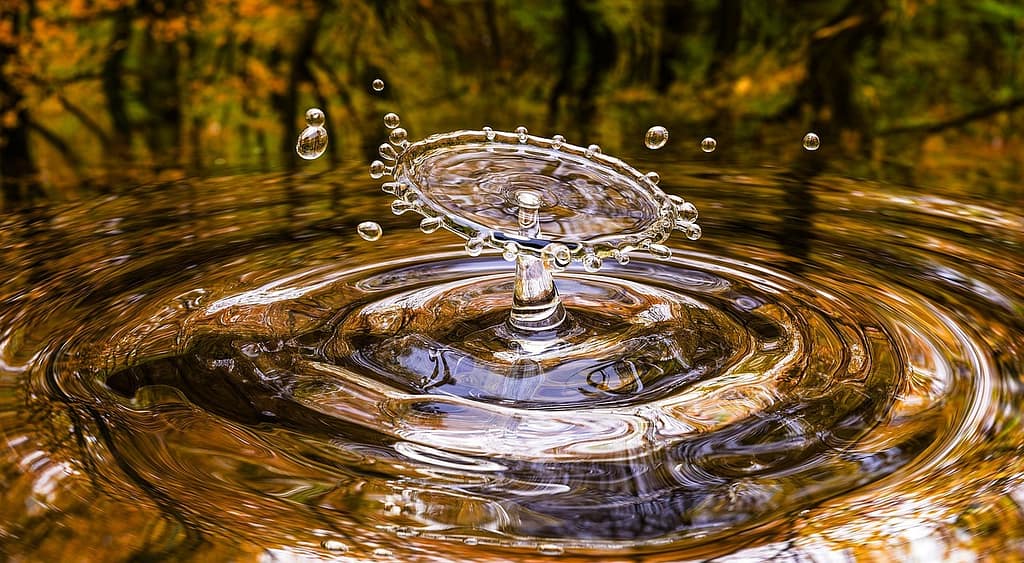The intricate dance of life on Earth is fueled by a complex system known as the food chain. This network of interconnected feeding relationships within an ecosystem dictates the flow of energy and nutrients, shaping the very fabric of life on our planet. Understanding the food chain is fundamental to appreciating ecosystem dynamics, trophic levels, biotic interactions, and energy transfer in ecosystems.
Introduction to the Food Chain
What is a Food Chain?
A food chain is a linear sequence of organisms in an ecosystem, where each organism feeds on the one below it in the chain, transferring energy and nutrients as it goes. It starts with producers, organisms that can capture energy from the sun through photosynthesis (like plants), and progresses through different levels of consumers, organisms that obtain energy by feeding on other organisms. Decomposers, like bacteria and fungi, break down dead organic matter, returning nutrients back into the ecosystem to fuel the cycle once again.

Importance of Food Chains in Ecosystems
Food chains are the backbone of healthy ecosystems. They ensure a constant flow of energy and nutrients, allowing life to thrive.
- Energy Transfer: Food chains provide a one-way flow of energy through the ecosystem. At each level, a significant portion of energy is lost as heat, limiting the number of trophic levels within a chain.
- Nutrient Cycling: Decomposers play a crucial role in breaking down dead organic matter, releasing essential nutrients back into the ecosystem for producers to utilize. This continuous cycling ensures the availability of these vital building blocks for life.
- Maintaining Biodiversity: Food chains promote a diverse range of species by creating a web of predator-prey relationships. Predators help regulate populations of herbivores, preventing them from overgrazing and maintaining a healthy balance in the ecosystem.
Basic Components of a Food Chain
A basic food chain can be broken down into three main components:
- Producers: These are organisms that can create their own food through photosynthesis, like plants, algae, and some bacteria. They are the foundation of the food chain, capturing energy from the sun and converting it into usable organic matter.
- Consumers: These are organisms that obtain their energy by feeding on other organisms. There are different types of consumers, including:
- Primary Consumers: Also known as herbivores, these organisms feed directly on producers (plants). Examples include rabbits, deer, and insects.
- Secondary Consumers: These organisms feed on primary consumers. Examples include carnivores like foxes, snakes, and many fish species.
- Tertiary Consumers: These organisms are at the top of the food chain and feed on secondary consumers. Examples include apex predators like lions, wolves, and large sharks.
- Decomposers: These are organisms that break down dead organic matter from plants and animals, returning nutrients back into the soil for producers to use. Examples include bacteria, fungi, and worms.

Types of Food Chains
There are two main types of food chains:
- Grazing Food Chain: This is the most commonly recognized type, where energy flows from producers (plants) to herbivores (primary consumers) to carnivores (secondary and tertiary consumers).
- Detrital Food Chain: This chain starts with dead organic matter (detritus) and decomposers. Detritivores (organisms that feed on dead organic matter) consume detritus, followed by higher-level predators that feed on these detritivores. These two chains often intertwine, forming complex food webs within an ecosystem.
Key Concepts in the Food Chain
Understanding these key concepts is crucial to grasping the complexities of the food chain:
- Trophic Levels: These are the different feeding positions within a food chain. Producers occupy the first trophic level, primary consumers occupy the second, and so on.
- Energy Transfer: Energy flows through the food chain in a one-way direction, with a significant amount lost as heat at each transfer. This limits the length of food chains, with most ecosystems having only a handful of trophic levels.
- Biotic Interactions: The relationships between organisms within a food chain are known as biotic interactions. These interactions include predation, herbivory, competition, and mutualism.
Understanding Trophic Levels
Trophic levels represent the hierarchical feeding positions within a food chain. Each level plays a specific role in the transfer of energy and nutrients:
- Trophic Level 1: Producers: These are the autotrophs, the self-nourishing organisms that capture energy from the sun through photosynthesis and convert it into organic matter. Plants, algae, and some bacteria fall into this category. They form the base of the food chain and are vital for the existence of all other trophic levels.
- Trophic Level 2: Primary Consumers: Also known as herbivores, these organisms feed directly on producers. They consume plant material obtained through grazing or browsing. Examples include rabbits, deer, insects, and grazing fish species. Primary consumers play a crucial role in regulating plant populations and transferring energy from producers to the next level in the food chain.
- Trophic Level 3: Secondary Consumers: These organisms are carnivores that feed on primary consumers. They obtain their energy by predation, hunting and consuming herbivores. Examples include foxes, snakes, many fish species, and insectivores (animals that eat insects). Secondary consumers help maintain a balance in the ecosystem by keeping herbivore populations in check.
- Trophic Level 4 and Above: Tertiary Consumers and Higher: These organisms occupy the upper levels of the food chain and are typically apex predators. They feed on secondary consumers and are not preyed upon by any other animals. Examples include lions, wolves, large sharks, and some large bird species. Apex predators play a critical role in regulating populations of lower-level carnivores and maintaining a healthy balance in the ecosystem.
- Decomposers: While not technically a trophic level, decomposers play a vital role in breaking down dead organic matter from all trophic levels. They break down complex organic molecules into simpler forms, releasing essential nutrients back into the soil for producers to utilize. This process completes the cycle and ensures the continued flow of nutrients within the ecosystem.

Impacts of Food Chains in Ecosystems
Food chains have a profound impact on the overall health and functioning of ecosystems. Here’s a closer look at some key aspects:
Cascade Effects and Trophic Cascades
A disturbance at one level of the food chain can have far-reaching consequences for other levels, creating a ripple effect known as a trophic cascade. For example, the removal of an apex predator can lead to an increase in the population of its prey (secondary consumers). This, in turn, can lead to an overgrazing of herbivores (primary consumers), ultimately impacting the producer population (plants). Trophic cascades highlight the interconnectedness of food chains and the importance of maintaining a balance.
Human Activities Affecting Food Chains
Human activities can significantly disrupt food chains in various ways:
- Habitat Destruction: The destruction of natural habitats, such as deforestation and wetland conversion, disrupts food chains by eliminating vital producers and altering the overall ecosystem structure.
- Overfishing: Unsustainable fishing practices can deplete fish populations, impacting entire food chains that rely on these fish as prey.
- Pollution: Pollution by pesticides, herbicides, and industrial waste can harm organisms at various trophic levels, disrupting the flow of energy and nutrients within the ecosystem.
- Climate Change: Rising temperatures, changing weather patterns, and ocean acidification can disrupt food chains by impacting the growth and survival of organisms at different trophic levels.
Understanding how human activities affect food chains is crucial for developing sustainable practices and mitigating their negative impacts.
Balancing Ecosystems Through Understanding Food Chains
By studying food chains, we gain valuable insights into the delicate balance within ecosystems. This knowledge allows us to implement strategies for:
- Conservation: Focusing on the protection of endangered species, particularly apex predators, helps maintain a healthy balance within the food chain.
- Habitat Restoration: Restoring degraded ecosystems allows producers to thrive again, providing a foundation for the entire food chain.
- Sustainable Practices: Developing sustainable fishing, forestry, and agricultural practices helps minimize disruptions to food chains and ensures the long-term health of ecosystems.
Understanding food chains empowers us to make informed decisions that promote a balanced and healthy environment for all living things.
Conclusion
Food chains are the cornerstone of a healthy and thriving ecosystem. They dictate the flow of energy and nutrients, shape species interactions, and ultimately determine the overall health of our planet. By understanding the complexities of food chains, their impact on ecosystems, and the threats they face, we can strive towards a future where human activities support, rather than disrupt, these intricate webs of life.




